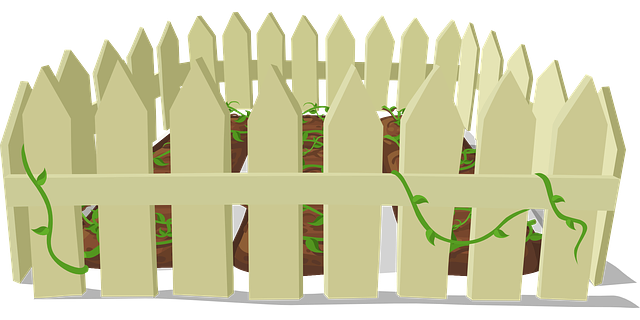Large properties present unique challenges when it comes to fencing, with an emphasis on durability, aesthetics, and affordability. This article guides you through diverse fencing solutions tailored for extensive landholdings, focusing on cost-effectiveness without compromising quality. We’ll explore various options, from traditional materials like wood and chain link to modern alternatives such as vinyl, offering a comprehensive overview to help property owners make informed decisions that suit their budgets and preferences.
- Understanding Large Property Fencing Needs
- Traditional Fencing Options and Costs
- Cost-Effective Alternatives: Vinyl Fences
- Exploring Wooden Fencing Choices
- Chain Link Fences: Durable and Affordable
- Longevity and Maintenance Tips for Budget-Friendly Fences
Understanding Large Property Fencing Needs
Fencing large properties presents unique challenges compared to smaller plots due to increased perimeter length and often diverse terrain. Understanding these specific needs is crucial for selecting suitable fencing solutions. Landscapers and property owners should consider factors like privacy, security, aesthetic appeal, and budget constraints. Each aspect requires tailored strategies; for instance, high-visibility areas may necessitate robust security fencing, while more secluded sections might benefit from natural barriers like hedges or trees.
Additionally, the layout of the property plays a significant role in determining fence type and placement. Access points, such as gates and entrances, require durable materials capable of withstanding frequent use. Diverse terrain adds complexity; sloped areas may demand specialized posts and brackets for stability, while uneven ground could necessitate customizable fence panels.
Traditional Fencing Options and Costs
Traditional fencing options include materials like wood, vinyl, and chain-link, each with varying costs based on quality and size. Wooden fences are known for their aesthetics, offering a natural look that can enhance property value. However, they require regular maintenance and can be expensive to install due to labor costs and the price of high-quality lumber. Vinyl fences are low-maintenance alternatives, available in various styles, but they come at a higher upfront cost compared to wood.
Chain-link fences are durable and secure, suitable for areas requiring more protection or visibility. While they are relatively affordable for their strength, they lack visual appeal and can be costly to install due to the large amounts of material needed for longer fence runs. These options represent the traditional approaches with established price points, setting a baseline for understanding cost-effective alternatives in fencing solutions.
Cost-Effective Alternatives: Vinyl Fences
When it comes to fencing large properties, vinyl fences offer an excellent cost-effective alternative to traditional materials. They are durable, low-maintenance, and highly versatile, making them a popular choice for homeowners looking to enhance their outdoor spaces without breaking the bank. Vinyl is resistant to rust, rot, and peeling, ensuring long-lasting performance even in harsh weather conditions.
This type of fencing comes in various styles, colors, and designs, allowing property owners to customize their look while keeping costs down. Its ease of installation and minimal upkeep make it a practical option for those seeking a quick and efficient solution. Moreover, vinyl fences contribute to energy efficiency by providing insulation, potentially reducing heating and cooling costs.
Exploring Wooden Fencing Choices
When considering fencing options for large properties, wooden fences offer both aesthetic appeal and cost-effectiveness. There are various types of wooden fencing to choose from, each with its unique characteristics. For instance, cedar is a popular choice due to its natural resistance to rot and insects, ensuring longevity even in harsh weather conditions. This type of wood also has a beautiful grain that adds warmth to the overall look of your property. Alternatively, treated pine is a budget-friendly option that can be stained or painted to match any desired style.
Moreover, wooden fencing allows for customization in terms of height, design, and picketing styles. You can opt for traditional vertical boards or go for a more modern horizontal slat design. Some homeowners even incorporate artistic touches like intricate carvings or custom patterns to create a unique fence that reflects their personal taste. With proper maintenance, wooden fences can last for several years, providing both privacy and an appealing exterior for your large property.
Chain Link Fences: Durable and Affordable
Chain link fences have long been a popular choice for large properties due to their exceptional durability and affordability. Constructed from robust steel wire, these fences are designed to withstand harsh weather conditions, making them an ideal solution for outdoor spaces that require maximum protection. Their strength lies in the tightly woven mesh, which prevents intrusion and offers clear visibility, ensuring your property remains secure while allowing natural light and air circulation.
The cost-effectiveness of chain link fences is another significant advantage, especially when compared to other fencing materials. The relatively low material and labor costs make them an attractive option for budget-conscious homeowners. Moreover, these fences can easily be customized with various coatings or colors, providing both functionality and aesthetic appeal without breaking the bank.
Longevity and Maintenance Tips for Budget-Friendly Fences
When investing in a cost-effective fence, it’s important to consider longevity and maintenance to ensure your money is well spent. Budget-friendly options like vinyl or chain-link fences are known for their durability and resistance to rot, rust, and damage caused by pests. Regular cleaning with mild detergent and water, along with occasional inspection for loose or damaged components, can significantly extend their lifespan.
Proper maintenance includes keeping the fence free from debris and overgrowth, as well as tightening any loose connections promptly. For wooden fences, applying a fresh coat of sealant every few years can protect against the elements and prolong its life. Remember, regular upkeep is key to maintaining not just the appearance but also the structural integrity of your fence, ensuring it serves its purpose for many years to come.
